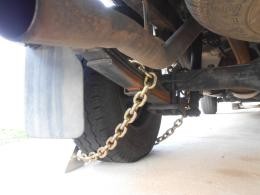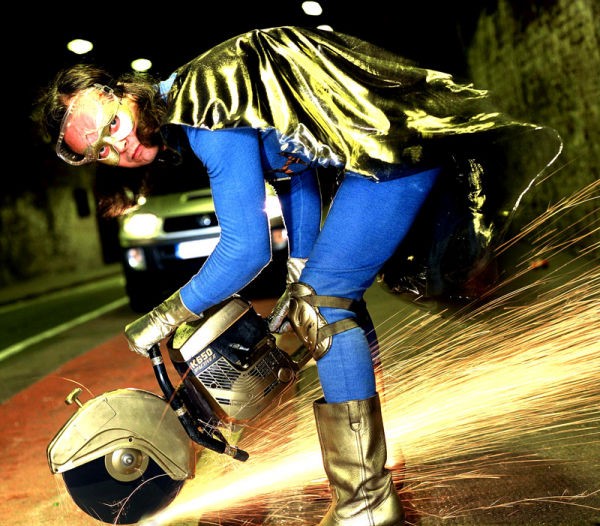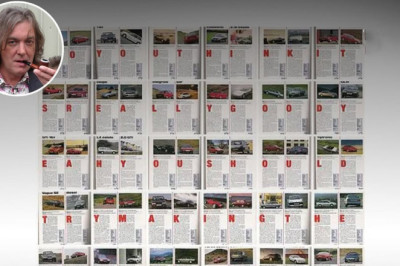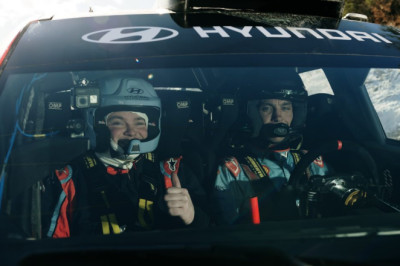
Wheel-clampers have been outlawed from clamping vehicles on private land under new legislation in England and Wales. The Protection of Freedoms Act makes it an offence to clamp on private land.
But the AA and the BPA have both said the new measures do not go far enough, expressing concern over a lack of protection from rogue parking operators.
Clamping Organisations.
If you get wheel-clamped, the first thing to do is to find out which organisation is responsible. This will be apparent if you look closely at the literature and stickers that have been left on your vehicle, and will usually be one of four distinctly different clamping groups.
1. Council Clampers.
These are people who either work for the local borough directly, or who are employed by an agency that is authorised to do the dastardly work on their behalf. The Council are responsible for most of the money that is extorted out of London’s motorists. They are very well paid, wear shiny shoes in the absence of jackboots and patrol the streets on little mopeds and in medium sized vans. Feeling safe behind their uniforms, they are the most likely to back down when threatened with a real confrontation.
2. Private Clampers.
These outfits are used to watch private property such as office and shopping car parks. Whist having perhaps morally the best case of all for clamping (if the relevant ‘no parking’ and clamping signs are displayed prominently), these guys can be genuinely thuggish and are often recruited from the criminal fraternity. This is probably because wheel-clamping is as lucrative as crime. They are also notorious for dirty tricks (such as parking ‘decoy’ cars in the area to lull drivers into a false sense of security) and are the most likely to bend or break the law in their pursuit of revenue.
3. Police Clampers.
Due to lack of time and resources, it would appear that the police do less and less clamping these days on the streets of London. They are, however, perhaps the most likely to pursue you through the courts for criminal damage if you illegally remove one of their clamps. They also, of course, have the power to arrest you themselves, unlike the council or private clampers who can only contact the police and ask that you be apprehended.
4. Individual Clampers.
Occasionally, individuals, or employees of a business or property, will decide to buy a few wheel-clamps and set up a money-spinning side-line themselves, without farming out the trade in misery to an external organisation. Some Railway Station car parks do this. These people are unlikely to have any legal knowledge regarding what they are doing and are perhaps even less likely (especially in the absence of any witnesses or C.C.T.V. footage) to try to take you to court for removing their clamps (indeed, you would probably have very good grounds for suing them)! They will usually be less organised than other types of clampers and I have even come across one Railway Station whose hand-written notes advising where the fines should be paid, were not even made out in duplicate, meaning, of course, that they themselves, would have no record of the registration numbers of any cars that they impounded!!
Types of Wheel-Clamp.

There are two basic designs of Wheel-clamp. The first type comprises a large steel, triangular plate and thick metal chain. The plate is placed over the front of the wheel and the chain, which is attached to one side, is wrapped around the back of the wheel, over the axle’s ‘wish-bone’ and back through a hole in the other side of the plate where it is secured with a padlock.
The second version consists of a frame-work of three metal legs, which extend around the front and side of the wheel and are held fast by a small metal plate that is padlocked over their central meeting point.
How To Cut Off A Wheel-Clamp
To remove a wheel-clamp you will need a petrol-driven, 5000 revolutions per minute angle-grinder and a 300mm diameter metal cutting disc (N.B. It is dangerous to use a diamond-tipped or similar style ‘slotted’ cutting disc on metal, always use a ‘solid’ one).
An angle-grinder and disc can be obtained from most hire shops at a total cost of around £30 to £35 per day. Make sure that you have been given full instructions in how to start, fit the disc and use the angle-grinder and, if possible, ask to practice with it in the hire-shop yard before leaving, so as to gain confidence.
To remove the triangular plate style clamp:
Kneel down and hold the metal plate firmly against the car’s wheel. Now pull the chain and padlock out through the plate as far as is possible so that the chain is pulled tight around the back of the car’s wheel. Stand up and, whilst holding the end of the chain still with your foot, cut through it at a point between the padlock and the metal plate that is as close to the padlock as possible. (N.B. If the clamp has been attached very tightly and there is no slack available, it may be necessary to cut the padlock from the end of the chain).

To remove the three-legged, frame-work style clamp: Some of these type of clamps do not have a metal plate to secure them but are fastened by their own interlocking design. If this is the case, or if your car has small wheels and there is a lot of free play between the different legs, then it may be possible to remove the clamp merely by deflating the car’s tyre and persistent wriggling. If this option is not feasible, then: Kneel down and pull the small metal plate away from the steel legs so that the padlock is held tightly and moves as little as possible. Cut through the padlock. Pull off the outer metal retaining plate and then the frame-work.
Cutting the wheel-clamp off cleanly using the above method means that it can be repaired easily and relatively cheaply by either re-attaching the chain (a Garage Mechanic, Blacksmith or anyone who owns a mig welder would find this a very simple task and would probably carry it out in exchange for a small charge or ‘drink’) or replacing the padlock with a similar one.
There are two advantages in repairing your wheel-clamp:
1. If you do find yourself in front of a magistrate on a charge of criminal damage, then, after admitting your guilt and explaining that you are not a delinquent, but were merely acting out of a strong sense of principal and moral outrage, you can produce the clamp and explain that although technically you are guilty, you have now returned the owner’s property to its original condition and would like to offer it back to them.
2. You can sell it to a car or caravan dealer ….”your worship”!!
When removing a wheel-clamp yourself, the first thing to do is to check for c.c.t.v. cameras. Next sit in your car, or nearby, and time how long it takes for the clampers to return to the area after leaving. When you have seen them do 3 or 4 circuits, you will know approximately how much time you have between them leaving and coming back again. Then as soon as you are sure that they have left, start the car and, with the engine running (you do not want to find out that your car won’t start after you have removed the clamp!), cut off the wheel-clamp.
It is very important to take away anything that can be used as evidence by the clampers, so pick up all traces of the amputated wheel-clamp (be careful, the cut parts will be very hot!) and put them in the boot of the car before driving away. It should be stressed that you do not need to press down hard in order for the angle-grinder to cut. If you hold it firmly and rev it up to full running speed, then the machine’s weight alone will be sufficient. The edge of the cutting disc travels at over 170mph, and a light, moderate pressure will be enough to slice through the metal in around 45 seconds. Be safety conscious, don’t rush and try to concentrate and stay focussed on what you are doing, in what will probably be a stressed and emotionally charged moment. Also, there will be a lot of noise and sparks, so again, take all safety precautions (wear work-boots and goggles etc.) and be prepared for an audience of (usually very supportive) onlookers.
What To Do If You Are Wheel-Clamped.
It should be remembered that wheel-clamps are merely a means of administering and enforcing, outrageous and incommensurately high fines that would otherwise be extremely difficult and expensive to collect. Without the coercion that holding their vehicle to ransom brings, the general public would not allow themselves to be extorted out of such large amounts of money.
The purpose of the wheel-clamp is as a form of blackmail, forcing the majority of victims into paying the local council’s ‘traffic-planning failure tax’, promptly. It should also be remembered, that if an organisation wishes to press charges against you for removing and/or stealing one of their clamps, then the onus is on them to prove that it happened. Without witnesses (they would presumably need more than one witness if you denied it and it was a straight ‘your word against theirs’) or c.c.t.v. footage, this would be hard for them. It does seem that the local boroughs of London, without good evidence, are not prepared to prosecute and are willing to sacrifice the odd clamp that disappears (and who could blame them? If a clamp is used only, say, 20 times, then it still earns nearly £2000 for them).
It should also be noted, however, that the clamping fine is actually made up of two separate parts, the fee for the clamp removal itself, and the parking fine. An overall charge of £85 is usually divided £45 /£40 and even if you avoid paying the clamp removal part of this fee, the council will still pursue you for the parking fine portion of the toll (this, of course, is not a problem if the said vehicle is not registered in your name).
Options Available.
Pay the fine.
Pros: No future comeback from officials whatsoever.
Cons: Expensive. Around £85 for most London boroughs Deeply frustrating and dissatisfying. May have to wait an hour to be de-clamped.
Cut the clamp off yourself and blame Angle Grinder Man or another third party.
Pros: Free again (apart from the parking fine part of the penalty). Extremely satisfying.
Cons: Can only really blame Angle Grinder Man if clamped in London.
N.B. If you intend claiming that your wheel-clamp was removed by a mystery and unknown person and that you found it by your car in it’s removed and dissected state, it might be an idea to hand it in to the local Police Station afterwards. Arrange your story carefully beforehand and, most importantly, get a written receipt for the wheel-clamp!!!
Cut off clamp, deny all knowledge of it and claim the wrong vehicle was clamped.
Pros: If successful, it is possible that the whole charge (including the parking fine portion) will not have to be paid.
Cons: To be successful, you may need to be prepared to take your lie and story all the way to court (a high risk course of action).
If you suggest to the council that perhaps it was not your car that was clamped and that possibly someone else is using your registration number, they will, of course, point out that it is highly coincidental that it is being used on a vehicle that is the same make, model and colour as yours. One possible way around this might be to invent a story about somebody assuming your car’s identity.
Perhaps a local person with a vendetta against you has been threatening to buy a cheap vehicle (of the same make, model and colour as yours) from a car auction, in order to display your registration number on it and drive it fast through speed-cameras and collect parking tickets etc. to get you into trouble. Explain that you think that this might be the person whose car was clamped. However, be extremely careful because they would undoubtedly demand the name of this mystery person so that they could pass him on to the police. Also, the London boroughs have started taking photographs of the vehicle license tax discs of any cars that they clamp, to help ensure that they are not ‘ringers’ (a stolen car which is assuming the identity of another vehicle). And if a car has a current, valid tax disc, then the person taxing it must have had to produce the registration document for that vehicle, so you might then become embroiled in further arguments about forged registration documents and tax discs.
Cut off the clamp and claim that you paid an official at the time.
Pros: As above, could be totally free. Satisfaction of turning the tables on your persecutors.
Cons: You cannot take this excuse all the way to court because the stakes would be so high.
This strategy is obviously extremely risky. What you are doing is tantamount to accusing the person who clamped you of corruption and, of course, you cannot do this in court. The main purpose of this course of action is to call the clamping organisation’s bluff and force them to back down before taking legal action.
Again, get your story sorted out in great detail beforehand.
A possible rough guide might be: “One of the clampers/traffic wardens (you will have to be very vague) took me to one side and said that he could remove the clamp for £20 cash in hand. He told me that if I told anyone else about it, that he would deny it, but if I didn’t need a receipt, he could take it off for me there and then, and would sort out the paperwork later.” “I can’t help it if you’ve got corruption in your workforce but this little ***** has conned me as much as he is conning you!….He promised me that I wouldn’t hear anything else about it!!!” When you are asked for his description: “He was average height, average build, between 20 and 35…I’m not very good with ages, and had shortish hair, although I can’t remember the colour” You will also probably be asked the guy’s race. I can not stress enough that I really do not recommend using this excuse in court because it is a very serious allegation and I believe that in court you should be totally honest if you want to achieve a good result.
However, in court it would be up to the clamping organisation to prove that you removed the clamp without paying, not up to you to prove that you paid a corrupt official on the side (they would be taking you to court, not you, them). Therefore, if you appear angry and determined when talking to the clampers and sound as if you are prepared to take it all the way, then I think that the chances of them taking you to court are slim. And of course, you can always change your story, if a summons does arrive.
Brazenly remove the clamp and admit full responsibility.
Pros: Don’t need to worry about c.c.t.v. cameras or clampers being nearby. Extremely satisfying. Opportunity of free ride in a Police-car. Eligibility for a permanent place in Angle Grinder Man’s hall of fame, photograph and full mention on web-site, as a ‘die-hard’ martyr to the cause.
Cons: Liable for hefty fine and possible half-board accommodation at one of Her Majesty’s holiday camps.
Sometimes clampers fail to adhere to even their own corrupt and immoral guidelines. If you think that this might be happening, then make sure that you make a note of the name and personal identification number of any officials that you have dealings with, along with a brief outline of your conversation and a description of what happened. Having their own bureaucracy turned upon them and defeating them on a technicality, would be a sublimely exquisite victory.
A Few Hints On Presenting Your Case In Court.
If you do find yourself in court charged with criminal damage or contesting a traffic offence, then I want to give you a few pointers to help you with your case:
- Present yourself well. Dress smartly, cover up any visible tattoos (use make-up if necessary) and, unless you are a bearded lady suing a travelling circus for unfair dismissal, have a shave. Your appearance will make a big difference the impression that you give.
- Be courteous and treat the magistrates with the greatest respect. Make good eye-contact with them, pay close attention when they are talking and answer all questions clearly, politely and honestly.
- Be honest. Magistrates spend their lives judging if people are lying or not, and they are very good at it! There is no point trying to fool them. Also, if you are speaking the truth, you will naturally speak with greater passion and confidence.
- Don’t be intimidated by the solicitors that you are facing. Remember that the magistrates are totally impartial and that when they ask you for your side of the story, they will listen very carefully. You have many things in your favour. Everyone is sympathetic to the little person who stands up to a larger and more formidable opponent on a point of moral principal. Especially if he appears slightly out of his depth, but is battling on regardless with honesty and passion. It strikes at the very heart of justice. Also, there will be three magistrates who will decide on the outcome of the case. As they will be local people, if you live in London, there is a good chance that at least one of them will have been clamped themselves in the past. Do not assume, that secretly, the magistrates hate the clampers any less than you do!
- Speak clearly, honestly and passionately. Again make good eye-contact with the magistrates when you are putting forward your side of the story (if reading from a sheet, then glance up between points). Stand confidently and erect and never place your hands in your pockets. Have brief notes made out beforehand of the main points that you want to make, and have these and any other things that you wish to show the court in a neat brief case. Preparation is the key.
- Don’t be scared to get it wrong. Don’t worry if you stumble on your words, read from a sheet of paper or need to ask the court for the correct procedure. As long as you are polite, this will not count against you. In fact, as explained before, it could very well help you. Put all embarrassment to one side. Your opponents might have a lot more courtroom experience and knowledge of the legal system than you, but this stands for nothing when it is up against passion and honesty.
- Good luck !

And Finally.
Every wheel-clamping case is different of course, and the above guidelines are only intended to be loose plans and ideas. We would like anyone who has been clamped and has tried any of our ideas to contact us. How successful were you? Perhaps you have your own approach that we have not thought of?
If it helps our brother clampees or gives us a laugh, then we want to hear from you. Tell us what happened, where and when, along with the clamper’s reaction afterwards. The best stories will be published in our email newsletters that will be going out at regular intervals. Your anonymity is guaranteed, unless you give us express permission to publish your name.
We would also love to hear from anyone who has any legal knowledge of traffic offences. For example, I heard that if traffic officials are lifting your car in preparation to take it to the vehicle impound area and all four wheels are not clearly off the ground when you return to it, then, by law, they have to give it back to you.
Does anyone know if this is true? (and, what happens if you own a Robin Reliant?!!) Another thing that would be very helpful is if anyone has any experience dealing with the parking appeals body that you are entitled to approach if you feel that you have been unfairly fined/clamped?
Original article by Angle Grinder Man who now appears to have retired!














